
Power & Purity / Rig Veda II.35
Equilibrium is the source of all power, creation and manifestation. Rene
Guenon: “Far from being the state of non-existence, equilibrium is on the
contrary existence considered in and of itself, independent of its
secondary, multiple manifestation; moreover, it is certainly not Non-Being,
in the metaphysical sense of the word, for existence, even in this
primordial and undifferentiated state, is still the point of departure for
the multiplicity of numbers.”
Thus it is in the equilibrium that all true power is to be found and this is
what our profit-motivated five-sense based science does not, could not
comprehend. This
avyakta
(unmanifest) power, that is the substratum within all, can only be accessed
through higher consciousness. The Pythagoreans understood the hubris of
science, and “recognized it as a potential means both of man’s liberation
and destruction; hence their insistence that only those purified in body and
spirit should be trusted with its secrets. …Science may become a hymn to the
creator or a Pandora’s box, and should be trusted only to saints.” [Arthur
Koestler]
Bhagavad Gita IV.10
Those whose greed, fear, and anger have disappeared, who are absorbed in
God-Consciousness, are purified by the austerity of Wisdom-Knowledge, and
reach the state of being of the One.
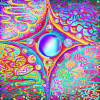
The Indian scholars
Swami Satya Prakash Sarawati and Satyakam Vidyalankar have translated the
Rig Veda II.35 hymn (sukta in Sanskrit) in an enlightening and scientific
manner. Swami Satya Prakash Sarawati is a renowned Vedic scholar who is said
to “bear scientific temper to his spiritual writings” - and Satyakam
Vidyalankar is a profound scholar who is also a poet of great merit.
The hymn-sukta was composed by the Rishi Gritsamadah Bhârgavah Shaunakah.
R.L. Kashyap’s esoteric translation gives the title as ‘The Son of Waters’ —
apâm napât in Sanskrit. R.L. Kashyap informs the reader that apâm napât, the
son of waters is the deity of the hymn and that it is usually Agni or
Savitri. The word apâm napât also occurs in three other suktas without
explanation (VII.35.13; VII.47.2; X.92.3). Kashyap also says that the word
annam meaning ‘food’ occurs five times in the hymn and in the 11th
verse he translates annam as ‘light’:
II.35.11 translated by R.L. Kahsyap:
The beautiful and secret name of the Son of waters and that flame-force
[anîkam], have increased. The maidens kindle him, the golden hued. Light is
his food.
Swami Satya Prakash Sarawati and Satyakam Vidyalankar translate the same
verse thus:
The hidden face and lovely name of this eternal fluid-dynamic energy grow
powerful. Golden-coloured water is the fluid of this fire divine and as
such, the youthful waters of the aerial ocean enkindle him well here.
Shyam Ghosh’s translation:
That splendour is its most pleasant character (nâma meaning name, mark,
symbol), as also the descendents from the Beyond (apâm, the progeny) in whom
it is dispersed to make them grow. When integrated (combined) into this
(body), it kindles (indhate meaning ignites, kindles) knowledge, and in this
way produces that shine of glittering bright (hiranya-varnam) halo (life),
which becomes the food (annam) of this body.
Ghosh’s note: Coming from the Beyond, the life energy impregnates matter,
enlivens it, and thus becomes its regular nourishment. The glow of life is
visible as long as the life-energy remains inside a physical body.
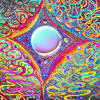
Thus we see how wonderfully diverse and illuminating the various
translations are! Each reflects the lens of the translator, their
background, education and life pursuits; and each brings another layer of
meaning out of the Rishi’s encoded intentions. I find it very interesting
that R.L Kashyap is Professor Emeritus of Electrical and Computer
Engineering at Purdue University who received his Master’s degree from the
Indian Institute of Science in Bangalore. In sincere respect, I have thought
that R.L. Kashyap may have written some software to help him sort out
riddle-like mysteries of the word meanings in the Rig Veda’s 10,000 verses.
Shyam Ghosh was a retired Government of India officer. When his publishers
Munshiram Manoharlal asked him for more bio-date, the then ninety year old
gentleman replied thus: “It is Truth that matters, not the utterer of the
Truth. No Truth ever becomes a bit truer even when repeated by the most
distinguished person. Hence all genuine aspirants of yoga should be content
to remain unknown and unnoticed by others.” I am very grateful to Shyam
Ghosh as he gave me my first glimpse into the secret wonders of the Rig
Veda.
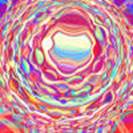
Science should only be trusted to Saints!
As previously stated, Swami Satya Prakash Sarawati is a renowned Vedic
scholar who is said to “bear scientific temper to his spiritual writings” -
and Satyakam Vidyalankar is a profound scholar who is also a poet of great
merit. I fully concur with the genius scholar Arthur Koestler in his
assessment that science should be trusted to Saints. I am committed to the
idea that the Rishis who composed the Rig Veda were not only Saints and
Seers (the word Rishi means Seer, those who ‘see’), but these men and women
were also scientists. Not scientists as we have today, who are owned by the
corporatocracy, but science in the sense of a sacred science that was
practiced by the Pythagoreans.
Arthur Koestler has a good introductory chapter on Pythagoras of 6th
century Samos Greece in ‘The Sleepwalkers, A History of Man’s Changing
Vision of the Universe.’ Pythagoras lived into his nineties and into that
long life-span he packed “all things that are contained in ten, even in
twenty, generations of men.” The son of a silversmith and gem engraver,
Pythagoras was the founder of a new religious philosophy and Science. He was
thought to have travelled extensively in Asia Minor and Egypt as many of the
educated citizens of the Greek Islands did. Around 530 B.C. Pythagoras
settled in Kroton, which was then the largest Greek town in Southern Italy.
Pythagoras “soon achieved semi-divine status; according to Aristotle, the
Krotonians believed him to be a son of the Hyperborean Apollo, and there was
a saying that ‘among rational creatures there are gods and men and beings
like Pythagoras.’ He worked miracles, conversed with demons from heaven,
descended to Hades, and possessed such power over men…” [A. Koestler]
The Pythagoreans were a religious order, an academy of science, and powerful
in politics. “They shared all property, led a communal existence, and gave
equal status to women. They observed rites and abstinences, gave much time
to contemplation and examinations of conscience.” They understood the hubris
of science and knew that it could be the “potential means both of man’s
liberation and destruction; hence their insistence that only those purified
in body and spirit should be trusted with its secrets.” Initiation into all
higher mysteries was according to each by the degree of their purification.
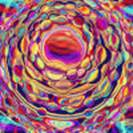
All components parts interlock
Arthur Koestler said that the terms ‘philosophy’ and ‘harmony’ are
Pythagorean in origin. The essence and power of the Pythagorean vision “lies
in its all-embracing unifying character; it unites religion and science,
mathematics and music, medicine and cosmology, body, mind, and spirit in an
inspired and luminous synthesis. In the Pythagorean philosophy all
components parts interlock, it presents a homogenous surface, like a
sphere…”
I value this last quote from Koestler comparing Pythagorean philosophy to a
sphere for in my own meagre however heart-felt explorations into the Rig
Veda, I have compared the old Vedic Sanskrit words to spherical layers of
multiple meanings. Therefore increasingly I am not bothered by the diversity
of translations — unless they make the Rishi Seers who composed the Rig Veda
appear as idolaters who were cow-worshipping tribals, which they most
assuredly were not!
Plasma the ‘blood’ of the cosmos
My interest in the theories of the Electric Universe and their concepts of
plasma physics led me to see correlations in the Rig Veda. For example I
began to feel that the Sanskrit word Soma actually meant plasma and there
are other examples I am in the process of deciphering — hopefully. In this
working out of comparable meanings I have come to feel that the theories of
The Electric Universe are wonderful, but remain limited as they focus on
matter and do not embrace the deeper realms ‘beneath the curtain of each
atom’ meaning the Wisdom-Knowledge of Purusha and Prakriti.
However, I think you will enjoy the following excerpts from the Swami Satya
Prakash Sarawati and Satyakam Vidyalankar translation of Rig Veda II.35 that
rings plasma physics, in fact using the words hydrodynamics and even
electricity. For brevity’s sake I have not included the entire verse, only
the plasma ‘science’ bits and the words within brackets are mine.
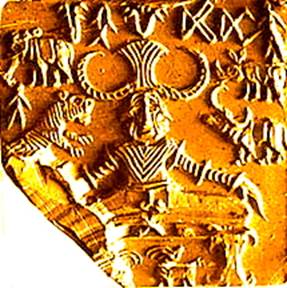
Rig Veda II.35
1. May the hydrodynamic power lying latent in the flowing [plasma] stream,
be wealth-giver [produce energy]…May this impetuous electric power so
utilized…
2. The hydrodynamic power, the noble Nature’s force, has generated good many
things existing by its supreme might.
3. Some waters [of plasma] collect together, others join them. As rivers
they flow together [expanding in energy] to a common reservoir. The pure
waters have gathered round the hydrodynamic power, pure and shining.
4. The…hydrodynamically produced fire…May all this bring abundance to us.
5. This power is formed as if in waters, but is utilized far and wide.
6. In him (the hydrodynamic power) lies the source of the mechanical
horse-power [propulsion for everything including aerial ships], and also
other advantages [has multiple uses]. May you defend the pious patrons [the
purified Saint of science] against malice and oppression [this science is
used for defence]. Neither the enemies not the untruthful villains [those
who have not purified their consciousness and being] would be blessed by
this energy [produced by plasma technologies], whether abiding in the
immature [imperfect] or mature waters [formulated levels of plasma].
7. He, the hydrodynamic power personified, abides in his own dwelling; he is
the cow [the rays of the ‘herds’ of stars, plasma in its electromagnetic ray
form flowing in space], which can be easily milked [accessed and used to
generate unlimited energy]…
8. All other creatures and the creepers with their offspring are indeed born
forth as the branches of this hydrodynamic energy [it is the various rays in
the electromagnetic spectrum which reach us here on earth that nourish
everything]…
9. The hydrodynamic energy, arrayed in lightning [and other forms such as
coronal mass ejections, auroras, sprites, etc.], ascends in the midst of
curled clouds.
10. The hydrodynamic energy in the form of fire and lightening has golden
form [hiranya-rupah] and golden appearance…
11. The hidden face and lovely name of this eternal fluid-dynamic energy
grow powerful. Golden-coloured water [hiranyavarnam] is the food of this
fire divine and as such, the youthful waters of the aerial ocean enkindle
[indhate] him well here.
12. Let us wait upon this nearest friend with many sacrifices, a prayer and
offerings…
13. He is his own revealer and sows the seed of plasma in the vast expanse
of the universe [here the suggestion is made that this apâm napât, ‘Son of
Waters’ is the source creator generator of plasma!] He indeed draws
life-giving element from them and they lick him [R.L. Kasyap translates
‘they lick’ as even more intriguing ‘rub bright and pure’].
That fluid-dynamic energy with unfaded effulgence, here unites as it
were with other manifested forms of divine powers (energies).
14. The great waters [forms of plasma in space] bearing rich nourishment to
feed their offspring flow and surround him who in his supreme position is
resplendent with the rays that never perish [perhaps suggesting the energies
that are the substratum of plasma].
The final verse 15 is directed to Agni, praising the fire with words of
purification, as Kashyap translates it.

Thus in respectful gratitude, I have shared the translation of the
Indian scholars
Swami Satya Prakash Sarawati and Satyakam Vidyalankar, along with what I
‘see’ when I approach the Rig Veda. As I have said, I believe that the old
Vedic Sanskrit words are comparable to spherical layers of meaning and
therefore intended to have multiple meanings — scientific, the more
spiritual and esoteric, and many others.
The Rishis were Seers who ‘saw’ what is eternally held in
avyakta,
the unmanifest, and in Prakriti’s undifferentiated subtle state — and
brought that Wisdom-Knowledge into human understanding on this our planet
Earth plane realm. The Rishis were brilliant and purified beings, far more
advanced than the Pythagoreans. The Seers who composed the Rig Veda were
qualified to understand advanced sciences, such as plasma physics, that
allowed our off-world progenitors to traverse that vast distances of space
simply by collapsing space-time, and arrive here to terraform and colonize
our planet as they have done with thousands more.
It is likely that the Arctic region was tropical at the time of their
arrival and thus B.G. Tilak’s study of the Rig Veda is of great value to
those who seek the truth of our human origins. The secrets of the great
ones, the Rishis, Seers of a more sacred science, remain hidden for us to
discover in the Rig Veda.
V. Susan Ferguson

The Metaphysical Principles of the Infinitesimal Calculus, by Rene Guenon,
1946; Sophia Perennis, Hillsdale NY, 2001, 2004.
The Reign of Quantity and the Signs of the Times, by Rene Guenon, 1945;
Sophia Perennis, Hillsdale NY, 2001, 2004.
The Sleepwalkers, A History of Man’s Changing Vision of the Universe, by
Arthur Koestler; Arkana, Penguin Books, Hutchinson of London, 1959.
RIG VEDA SAMHITA: Mandalas 1 – 10, 12 volumes, (Text in Devanagari,
Translation and Notes), by R.L. Kashyap; Saksi, Published in collaboration
with ASR, Melkote; Sri Aurobindo Kapali Sastry Institute of Vedic Culture,
Bangalore, India, 2009.
The Four Vedas: Mantras in Sanskrit with Transliteration & English
translation (Set of 22 Volumes); Rig Veda, complete in 12 volumes;
translated by Swami Satya Prakash Sarawati and Satyakam Vidyalankar; DAV
Publication Division, Delhi, 2008, 2011.
A Beginner View of Our Electric Universe, by Tom Findlay; Grosvenor House
Publishing Ltd.; Guildford, Surrey, 2013.
The Celestial Key to the Vedas by B.G. Sidharth; Inner Traditions, 1999.
The Harmonic Conquest of Space, by Bruce Cathie; Adventure Unlimited Press,
Illinois, 1998.
The Arctic Home in the Vedas, by Lokmanya Bal Gangadhar Tilak, Arktos Media
Ltd. , London, 2011.
| Questions
or comments about articles on this site: Email V. Susan Ferguson: Click Here |
Copyright© V. Susan Ferguson All rights reserved. |
Technical questions or
comments about the site: Email the Webmaster: Click Here |